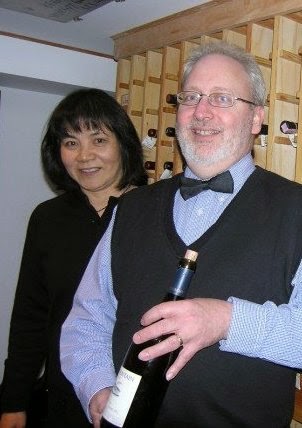'Elegance'
is one of the most overused words in wine writing – reviews as well as
marketing. Such and such wine has elegance; that wine is filled with elegance; the winemaker puts elegance in the bottle. As if elegance
were an ingredient to add or subtract. We can imagine some corporate panel sending memos down to the winery- "needs more elegance, increase elegance by a third."
Sometimes elegance is used in wine writing as a kind of code word for the opposite of powerful. Let's say this year the grapes did not fully ripen because the weather was lousy or they picked too early or they over cropped. The resulting Cab turned out to be 13.5% alcohol and their usual offering at, say, 15%. The winemaker (or their marketing writers) will say, "this year our stellar Cabernet Sauvignon shows tremendous elegance."
Tremendous. So any insipid, weak wine has elegance? Oy. Meaningless.
The masters offer a bit of help: Tom Stevenson in his Wine Encyclopedia defines elegance as "stylish, possessing finesse." Unfortunately he defines finesse as the characteristic that separates fine wine from the rest. So all fine wine has elegance. And we are back to meaningless.
In the Real World©, elegance is usually considered a quality of the feminine. A Chanel dress. Audrey Hepburn. Baccarat crystal.Timeless, classic and stylish. Bur can't men also be elegant? Can't elegance also be a quality of powerful men and powerful women?
In engineering, software design and mathematics, elegance is used to describe solutions that are simple, effective and without excess. Perhaps we can also think of elegance in wine that way - beautiful and delicious without being too much - simplicity without being simple.
Tasted
both alone and at table, the 2012 Alphonse Mellot 'La Moussiére' completely charmed me and my
dining partners. 'La
Moussiére' from Sancerre in France is a wine of elegance – pleasing, graceful, nuanced yet
deceptively simple.

No comments:
Post a Comment